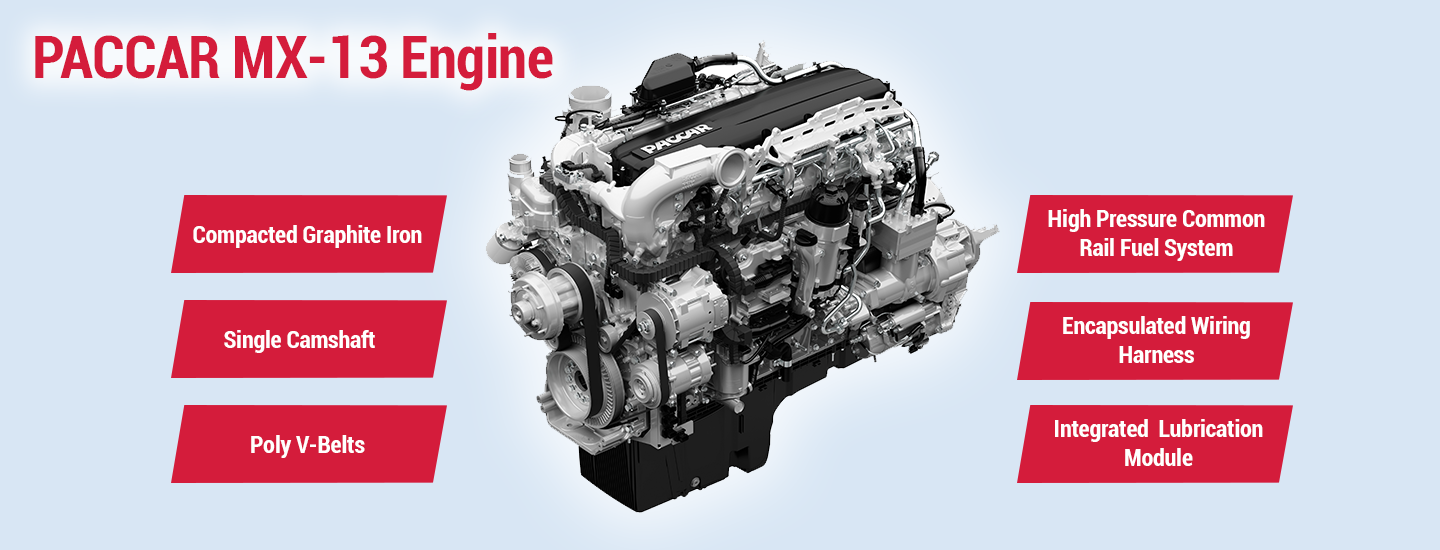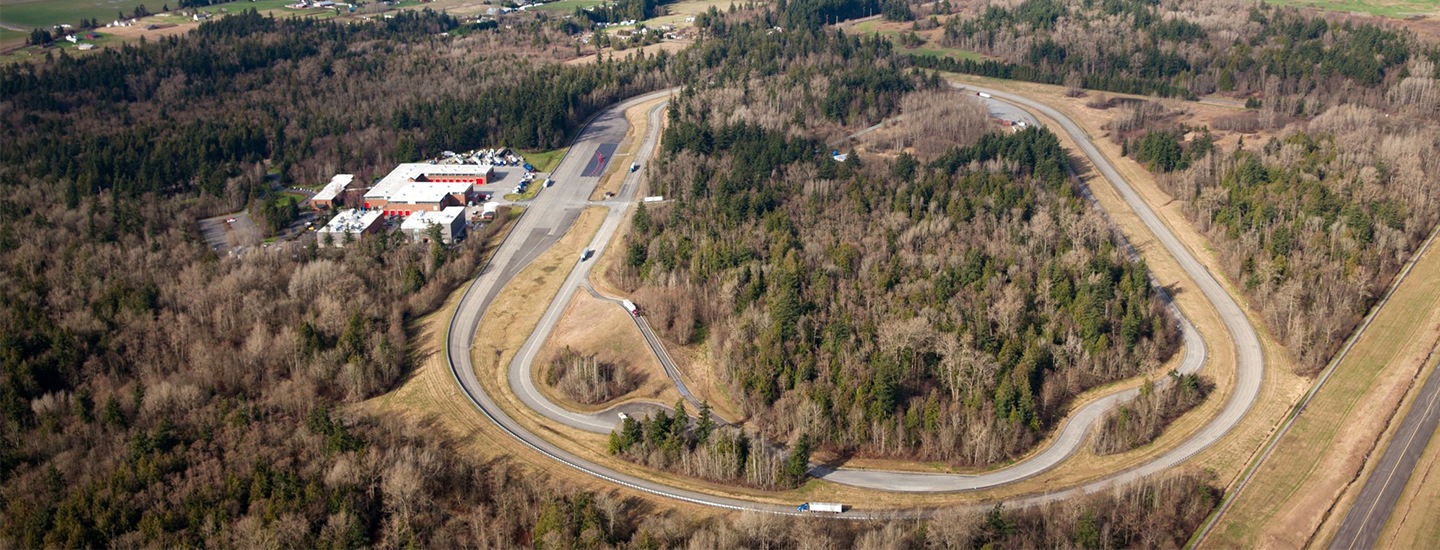January 22, 2019

Tested and Tested Again: The PACCAR MX Engine Meets the Challenge
Before a PACCAR MX engine is put to work in a customer truck, the design has gone through countless hours of testing to ensure quality, performance and a best-in-class service life. It’s one reason why either the MX-13, up to 510 hp, or the smaller and lighter MX-11, up to 430 hp, is spec’d in the majority of PacLease Class 8 trucks in a full-service lease.
The continual drive to make PACCAR MX engines leading edge happens in part at PACCAR’s Technical Center. Tucked away in Mount Vernon, Washington, about 70 miles north of Seattle, this state-of-the-art facility conducts research and testing for PACCAR divisions. At the Tech Center, 400 driven employees, including structural and electrical engineers, materials scientists and powertrain experts pave the way for innovative technology development. The facility features a 1.6-mile banked high-speed oval track, and a research and test facility on 375 acres near Padilla Bay.

While the facility focuses on all Kenworth and Peterbilt products, it also tests and validates PACCAR MX engines. PACCAR MX engines are designed with an industry-leading B10 life. And, that’s significant – it means 90 percent of the engines will reach one million miles without needing a major overhaul. That’s a big competitive advantage over other engines on the market. And that’s why testing is so important – it helps validate that these engines will meet the test of time for their first owner, as well as their second. As new enhancements are designed for the engine, they undergo vigorous tests by world-class experts who have made testing a career at the Tech Center. They develop, test and validate engines, powertrains and vehicles to ensure all are best in class.
The Tech Center has been testing and validating the PACCAR MX engine for the North American market dating back to 2005. The facility has numerous dynamometers, which act as a treadmill for the engine. Through dynamometers, engineers can “challenge” the engine by changing dynamic loads, plus it can run performance tests to measure durability and emissions levels.
Digging deeper, the facility has what’s called the Powertrain Test Cell — consisting of four integrated dynamometers, the test cell can test the engine, aftertreatment system, transmission and axles together as a system. By using this test, engineers are able to optimize fuel economy and smooth out shifting.
As technology continues to expand, PACCAR is leading the way. The Tech Center developed hardware in the loop (HiL) test benches — which simulate truck inputs to have ECUs operate as if they were driving down the road. The result is simulated real-world testing of PACCAR MX engines.
To further its testing of “real-world scenarios,” the Test Center has a climate chamber, which is used to change the temperature and pressure trucks could experience while on the road. By using the chamber, engineers can simulate how an engine will hold up in temperatures as low as minus 22 degrees Fahrenheit and as high as 130 degrees Fahrenheit. The chamber can also reduce the pressure of the air the engine breaths, acting as if the truck were driving at an altitude of up to 14,000 feet. An advanced air tunnel in this test cell is also capable to simulate the conditions seen by a truck while travelling up to 75 mph. Combined with the powertrain dynamometer, these two test areas allow PACCAR to validate its on-board diagnostics strategy, which is critical to the regulatory compliance of its engines.

In addition, by running these tests, engineers are able to recognize potential changes they need to make, so that the engines can handle some of the harshest conditions in the world, like Death Valley, Canada’s Northwest Territories and passes like Baker Grade in California. After simulating these conditions at the Tech Center, test drivers take Kenworth and Peterbilt trucks on the road to confirm that the vehicles perform under real-world conditions.
While PACCAR puts together a great engine, it also tears them apart. There’s always learning and validation that happens when Tech Center engineers take apart an engine with a million-plus miles. Being this thorough allows the engineers to look at individual components to see how they’re holding up and spot possible areas for improvement.
No doubt the Tech Center is impressive, but a building is just a building unless you have passionate and dedicated people with a common goal of perfection. And the Tech Center truly does – people are PACCAR’s biggest asset and they set the bar when it comes to testing and validating world-class products.
While the Tech Center’s reputation is highly regarded, so too is where PACCAR engines are produced. Each engine is assembled at PACCAR’s 450,000-square-foot engine and technology plant in Columbus, Mississippi. The plant is so high quality and innovative, it was named the 2017 Quality Magazine Plant of the Year.
What PACCAR is doing in manufacturing with the engine even caught the eye of Harvard Business School and Dartmouth College. Each visited the plant to gather information for case studies on advanced manufacturing in the United States.
What’s in the future with the PACCAR MX engine? Continued leadership and continued improvement….and yes, testing to verify those improvements work as advertised. The PACCAR MX engine is known for quiet and smooth operation, durability, fuel economy and its power curve. It’s the recipe for success for fleets looking for high performance.
